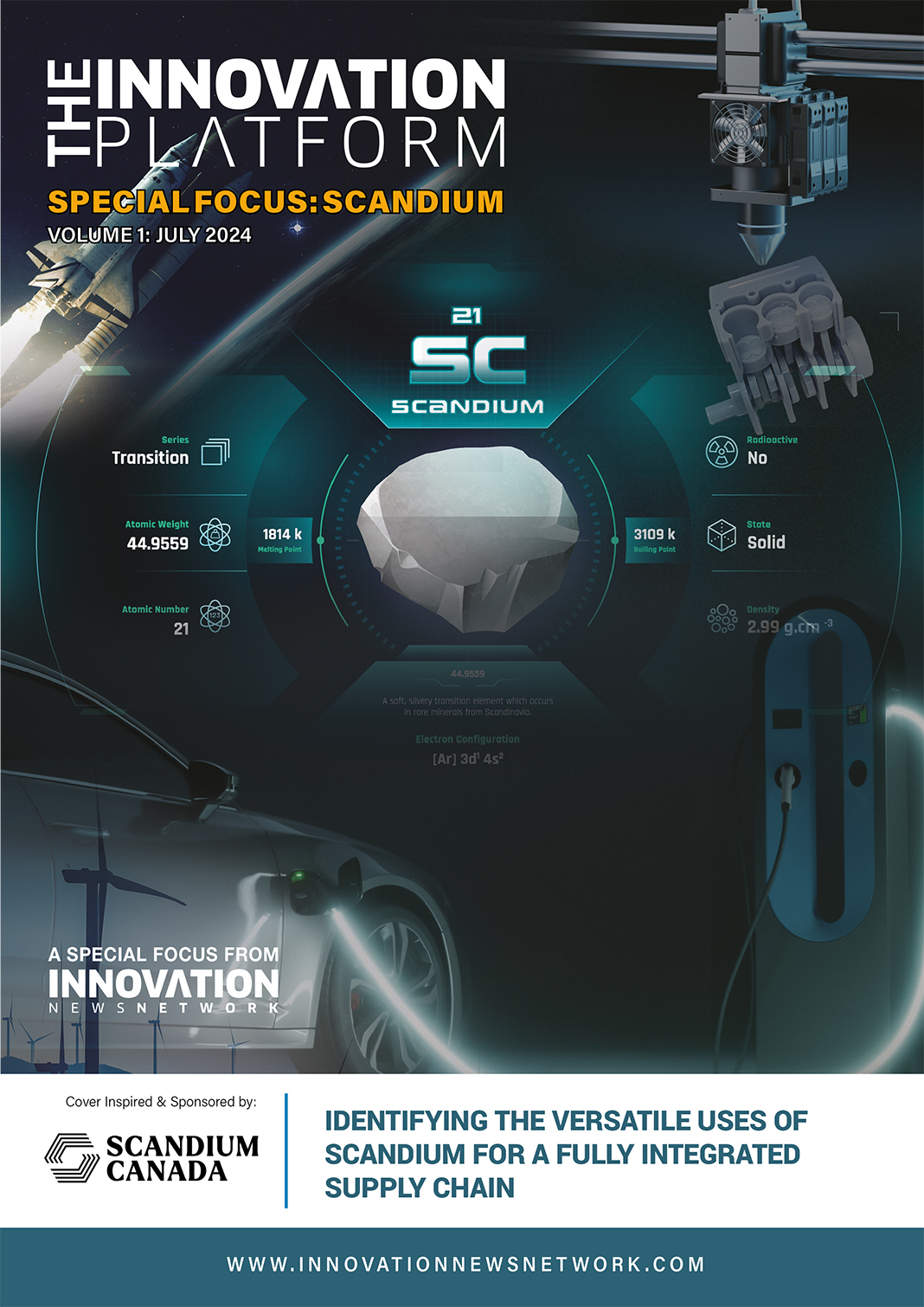Welcome to our Scandium Special Focus eBook, which delves into its exciting current applications, ongoing exploration efforts, and the promising potential it holds for the future.
The extensive uses of scandium make it a pivotal player in several key industries. Its impressive attributes, such as its ability to improve the performance of solid oxide fuel cells and create strong yet lightweight alloys, make it a favourable element in sectors such as transport and electricity.
Despite being identified as a critical metal by the governments of Canada, the US and the EU, it is relatively rare in nature and is considered a rare earth element.
Exploration companies, such as Scandium Canada are now looking to tap into this rare earth’s potential by producing a fully integrated scandium supply chain.
This Special Focus eBook examines the various uses of scandium and exploration work dedicated to increasing the supply of this critical element.
What is scandium?
Scandium, a silvery white metal with the symbol Sc and atomic number 21, is a chemical element in the transition metals group of the periodic table.
It’s a lightweight metal with a density similar to aluminium and has a high melting point, making it easy to shape.
Only a few uses of this unusual transition metal have been developed, mostly due to scandium’s limited availability and high cost. Its low density and high melting point suggest applications as an alloying agent for lightweight metals for military and high-performance applications.
Scandium Canada has established itself as a key player in tapping into the uses of scandium. With its Crater Lake project, the company aims to develop one of the primary scandium projects in the world.
The vision of Crater Lake is to contribute to society’s goal to reduce carbon emissions to net zero.
The extensive uses of scandium
The major uses of scandium are as an alloy additive to aluminium-based alloys for sporting goods and in high-intensity metal halide lamps.
By integrating scandium into lightweight alloys, industries can significantly reduce the weight of their products and, as a result, the energy required to move them.
Scandium-aluminium alloys, for example, offer a material that’s not only stronger and more corrosion-resistant but also significantly lighter than those currently in use. This means cars and planes that require less fuel, translating to lower greenhouse gas emissions.
In the realm of clean energy technologies, the use of scandium plays a pivotal role in developing solid oxide fuel cells (SOFCs). These fuel cells, known for their high efficiency in electricity production, can operate at lower temperatures when scandium is added to their electrolyte materials.
This not only improves their performance and longevity but also reduces the overall cost, making clean technology more accessible and widespread.
Topics covered in this eBook
The eBook begins by discussing the potential of scandium in cutting-edge technologies and how it can power innovation in the materials science sector.
Then, Scandium Canada discusses its summer work focus at the Crater Lake project, revealing this will focus on the company’s upcoming pre-feasibility study.
The Crater Lake project, located in Québec, could be the important reliable scandium supplier required by the market.
The Company is working on three parallel paths to advance the company overall. First, it is working on the project level, which includes the summer 2024 fieldwork programme and metallurgical pilot tests to move from its 2022 Preliminary Economic Assessment to the Pre-Feasibility Study (PFS) stage, which is expected in H1 2025.
Furthermore, it is working on developing relationships with potential large users of aluminium scandium alloys in all sectors.
The final article explores its versatile uses, from aerospace to renewable energy. It has the potential to revolutionise the way we travel, generate energy, and even illuminate our surroundings.
As technology continues to advance, the future of scandium applications looks promising, with even more opportunities for growth and development on the horizon.


